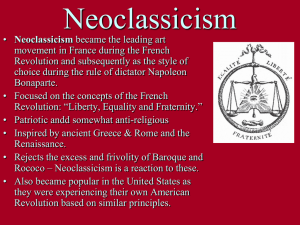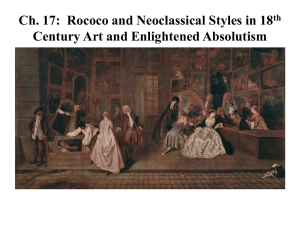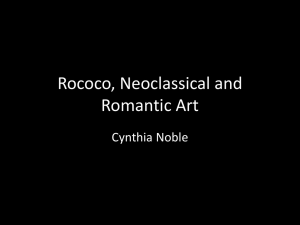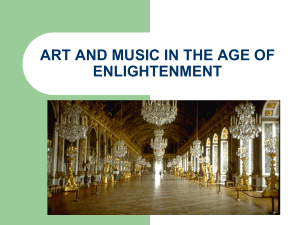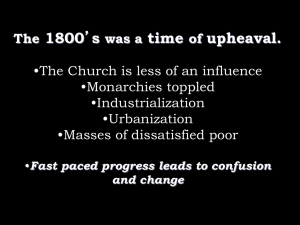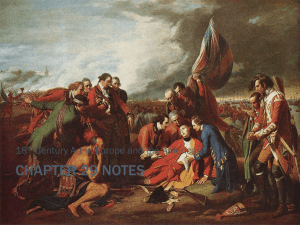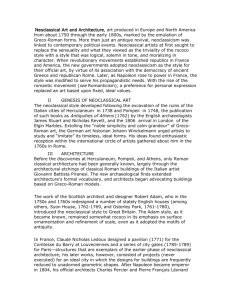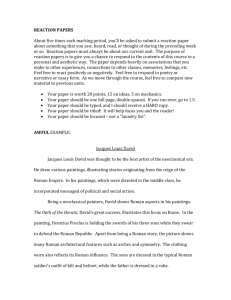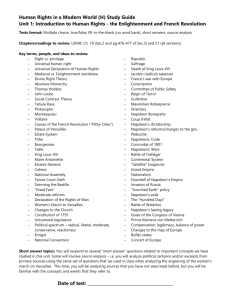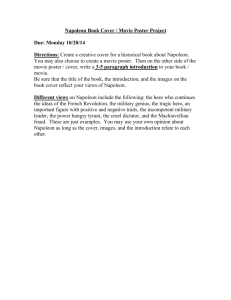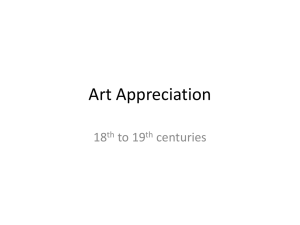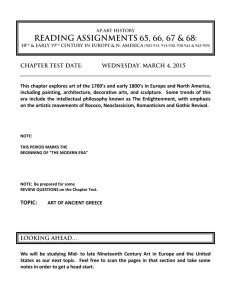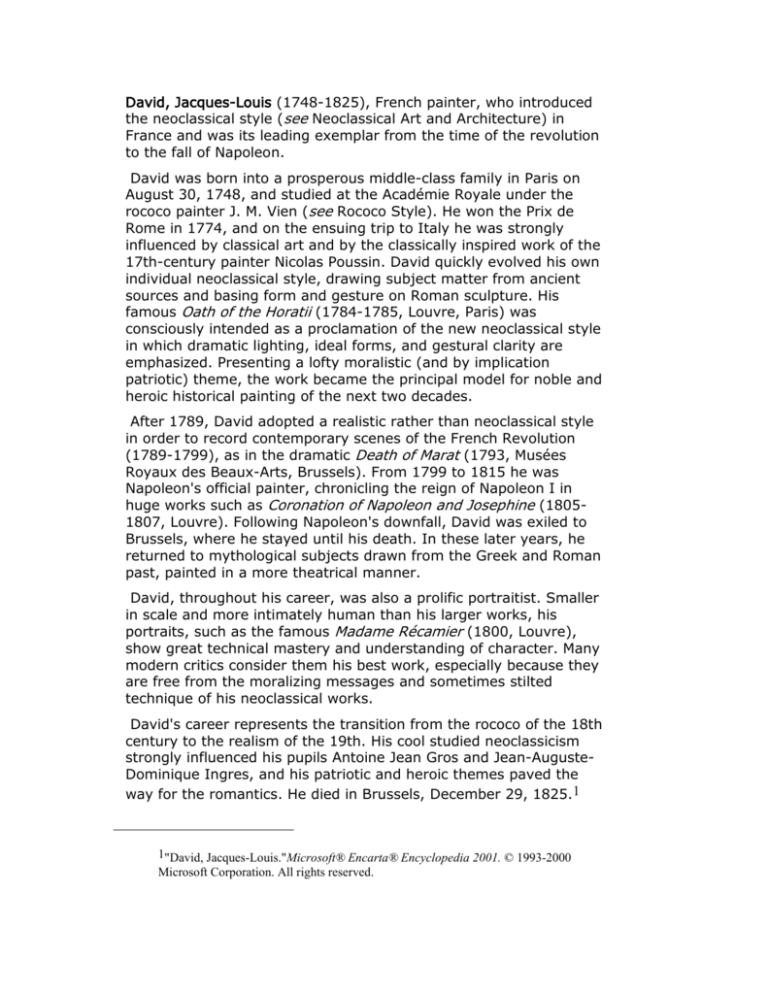
David, Jacques-Louis (1748-1825), French painter, who introduced
the neoclassical style (see Neoclassical Art and Architecture) in
France and was its leading exemplar from the time of the revolution
to the fall of Napoleon.
David was born into a prosperous middle-class family in Paris on
August 30, 1748, and studied at the Académie Royale under the
rococo painter J. M. Vien (see Rococo Style). He won the Prix de
Rome in 1774, and on the ensuing trip to Italy he was strongly
influenced by classical art and by the classically inspired work of the
17th-century painter Nicolas Poussin. David quickly evolved his own
individual neoclassical style, drawing subject matter from ancient
sources and basing form and gesture on Roman sculpture. His
famous Oath of the Horatii (1784-1785, Louvre, Paris) was
consciously intended as a proclamation of the new neoclassical style
in which dramatic lighting, ideal forms, and gestural clarity are
emphasized. Presenting a lofty moralistic (and by implication
patriotic) theme, the work became the principal model for noble and
heroic historical painting of the next two decades.
After 1789, David adopted a realistic rather than neoclassical style
in order to record contemporary scenes of the French Revolution
(1789-1799), as in the dramatic Death of Marat (1793, Musées
Royaux des Beaux-Arts, Brussels). From 1799 to 1815 he was
Napoleon's official painter, chronicling the reign of Napoleon I in
huge works such as Coronation of Napoleon and Josephine (18051807, Louvre). Following Napoleon's downfall, David was exiled to
Brussels, where he stayed until his death. In these later years, he
returned to mythological subjects drawn from the Greek and Roman
past, painted in a more theatrical manner.
David, throughout his career, was also a prolific portraitist. Smaller
in scale and more intimately human than his larger works, his
portraits, such as the famous Madame Récamier (1800, Louvre),
show great technical mastery and understanding of character. Many
modern critics consider them his best work, especially because they
are free from the moralizing messages and sometimes stilted
technique of his neoclassical works.
David's career represents the transition from the rococo of the 18th
century to the realism of the 19th. His cool studied neoclassicism
strongly influenced his pupils Antoine Jean Gros and Jean-AugusteDominique Ingres, and his patriotic and heroic themes paved the
way for the romantics. He died in Brussels, December 29, 1825.1
1"David, Jacques-Louis."Microsoft® Encarta® Encyclopedia 2001. © 1993-2000
Microsoft Corporation. All rights reserved.

